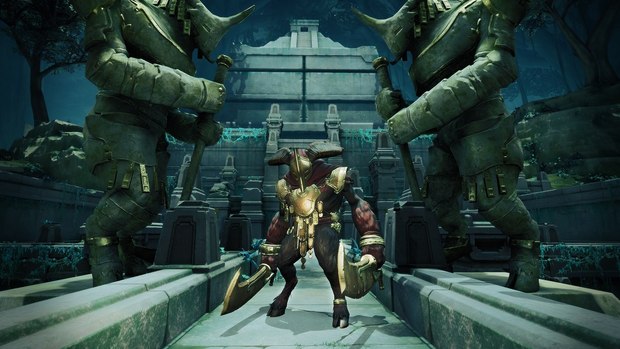Sydney-based CG studio teams with Gunfire Games to create Virtual Reality role-playing launch title for Oculus Rift using the Unity game engine.
Plastic Wax is a CG studio based in Sydney, Australia specializing in pre-rendered cinematic and in-engine content for video games and film. Known for their work on Gears of War, LEGO Star Wars and The Hunger Games 2, Plastic Wax was eager to take on the challenge of VR.
Executive Vice President Dane Maddams commented, “It was a privilege to work on Chronos with the talented Gunfire and Oculus teams. Plastic Wax has grown by 30% in the last year from VR and In-engine content alone, this expansion has been driven by the industry's pursuit for rich, narrative-focused content within the space.”
“Finding ourselves on the ground floor in VR storytelling,” continued Maddams. “our studio is working on several large-scale projects, in an industry that predicts a global market share of 50 Billion by 2020 along with a diverse catalogue of film, games and pre-rendered animation content, the future looks bright for the industry and our teams.
On the creative side, Plastic Wax crafted the opening sequence of Chronos in its entirety. This involved creating characters, environments and real time gameplay experiences in Unity 4.
Creating a VR experience presented its own unique challenges explained Carly Glover, producer on the Chronos project, “Chronos was certainly a unique project which required a certain level of forward-thinking and problem solving along the way Unlike most CG trailers we work on, we didn't have the luxury of dressing to camera, we needed to make sure we had a complete 360 set that looked great from every angle. During testing we experienced the challenges of variable players, what looked good to one person read completely different to another. Storytelling is a large part of the project and with the player now having the freedom to look in any and all directions, we needed a way to establish a connection that could hold their focus. This pushed us to look into more technical solutions, developing a script that would direct the hero performer (tribeswoman) to look directly at the player during key moments of her dialogue, imitating personal interaction. Eventually we were able to have her follow our eye line, regardless of the angle or position of the player.”
“Overall this was then coupled with the limitations of ensuring everything runs in real-time, which is quite a different process to our pre-rendered cinematics. Here we needed to carefully manage the quality and number of assets, with the complexity of lighting and VFX to ensure that every player has a smooth non-jarring experience (that doesn't interfere with their immersion in our VR world),” concluded Glover.
The whole team at Plastic Wax are thrilled by the future of VR, the potential for crafting more immersive experiences and redefining play.
Source: Plastic Wax








